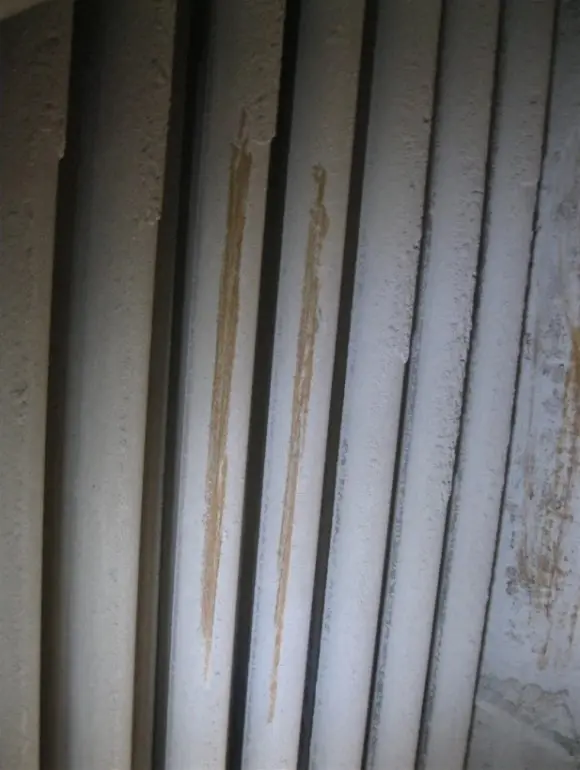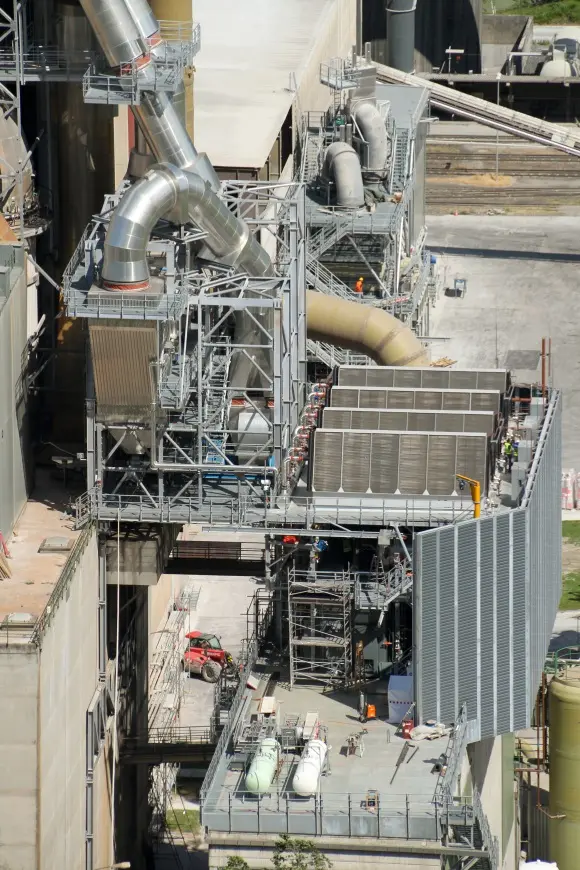Project example: Computational models for heat exchangers
Developing computational models for heat exchangers in applications with high dust loads
In industry, large quantities of waste heat are found in form of highly dust-laden exhaust gas streams. Extracting this energy is very demanding on heat exchanger systems. Dust deposits on the transformer surface create an insulating layer which greatly reduces thermal output (fouling). Heat exchangers are therefore equipped with high safety allowances in the form of additional transfer surface, which also entails higher investments. This project examines the pre-heater heat exchanger in the ORC system (ABB) at the cement plant in Untervaz (Holcim) for fouling.
Implementation and Results

The pre-heater heat exchanger in Untervaz removes a heat output of approx. 10 MW from the highly dust laden (approx. 100 g/Nm3) exhaust gas. The effect dust deposit has on heat transfer is pivotal (cf. Fig. 2). Using thermodynamic models we examined the effect fouling has on the global heat-transfer coefficiency or k-value.
The models were validated based on measurements, taking into account a uniform layer of dust on the heat transfer pipes. The validation used the outlet temperatures of the mass flows and the thermal output. The result provides good congruences between the model and measurement with relative deviations of 2 %. The resulting k-value is lower than assumed during design (cf. Fig. 3).
